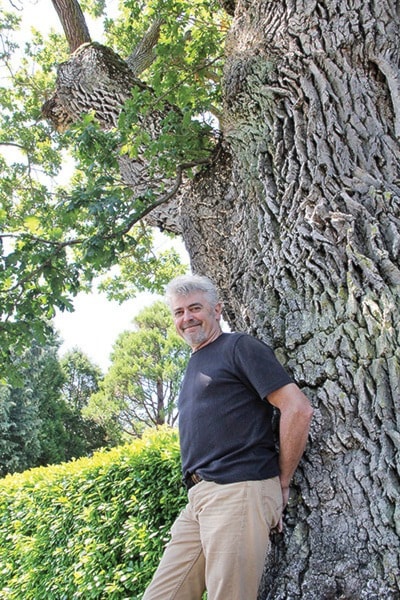As Oak Bay and Diamondhead Consulting work to build the community’s Urban Forest Strategy, they want more input from residents themselves.
“The strategy is in the early stages of development and the information collected from the stakeholder engagement, staff interviews, policy review and Oak Bay residents will be assembled to formulate draft recommendations,” said Chris Hyde-Lay, parks manager for Oak Bay.
“Oak Bay’s trees, green spaces and natural areas are a key part of our community’s identity but as our trees age and our community develops there will be changes in our urban forest. Currently Oak Bay has tree canopy cover of 33 per cent composed of about 10,000 boulevard trees, thousands more natural area trees and trees on private property. At 33 per cent Oak Bay is doing well compared to other similarly aged and fully development communities like Victoria or New Westminster who have an 18 per cent canopy cover.”
Canopy cover is typically defined as the percentage of ground covered by leaf canopy as seen from overhead. It is also an effective high-level indictor for all of the human health, ecosystem services, economic and aesthetic values that trees generate here.
“Given the changes we expect to see over the next 100 years, we need a plan to guide what we can do now to ensure that Oak Bay’s urban forest is a legacy for the next generation,” Hyde-Lay said.
“As we work towards implementing the official community plan, it is a perfect time to do an urban forest management plan and have all of the issues on the table.”
In 1984 a municipal tree inventory identified approximately 10,000 municipal boulevard trees. Of those 5,300 were smaller flowering trees such as cherry, plum, English Hawthorne and mountain ash.
The rest were larger shade trees such as Linden, chestnut, maple, and oak.
“One of our challenges is the smaller flowering trees and many of our larger shade trees are considered mature to over-mature, as are some private trees which get identified through our Tree Protection Bylaw. Many will need replacement in the future,” Hyde-Lay said.
In 2013 the municipality began tracking trees larger than 60 centimetres in diameter removed from private property. Since then, 498 trees have been removed, 309 of them Garry oak.
All were removed because they were dead, diseased or dying and few were replaced.
Since 2013, 58 trees have been removed to accommodate development with 77 to be replaced on private land.
On the municipal boulevards 225 trees have been removed since 2013 because they were dead, diseased or dying and 305 have been replaced. Of the new trees, 25 per cent are Garry oak.
“Tree protection alone will not ensure sustained or increased canopy cover, which is one of our objectives. Protection measures are an important piece but to successfully achieve canopy cover targets – 40 per cent would be considered ideal – in the long term, a comprehensive approach that links tree removal to tree replacement and a proactive tree planting program that encompasses both public and private lands is important,” Hyde-Lay said.
In May a workshop, about 60 residents provided input on the urban forest and other forest issues they felt were important for consideration.
“There’s been a great amount of comment on trees and heritage,” said Ron Carter, part of the earlier working group on the urban forest strategy.
“We have a canopy of oak trees of similar age and varying degrees of damage. … We need to replenish them. It really is our signature tree,” Carter said.
He likens the urban forest survey, available online, at local recreation centres and at municipal hall, to the input on the official community plan and other recent surveys.
“The comment sections of those surveys were more accurate than the surveys themselves,” Carter said.
“(Survey questions) didn’t reflect the passion people feel for the urban forest.”
For example, he’s a proponent of replanting and finding room for trees to be planted in supportive grouping, as buffering or even traffic calming.
“There has to be a lot of interdepartmental action for that to happen,” Carter said, noting there’s no question to represent that on a survey.
“If you want to voice your opinion at least fill out the survey and fill in the comments.”
Find a link to the Urban Forest Management survey at oakbay.ca/parks-recreation online or at www.surveymonkey.com/r/2GRW6L2.
Hard copies of the survey are also available at Monterey, Henderson and Oak Bay recreation centres as well as municipal hall, 2167 Oak Bay Ave.
